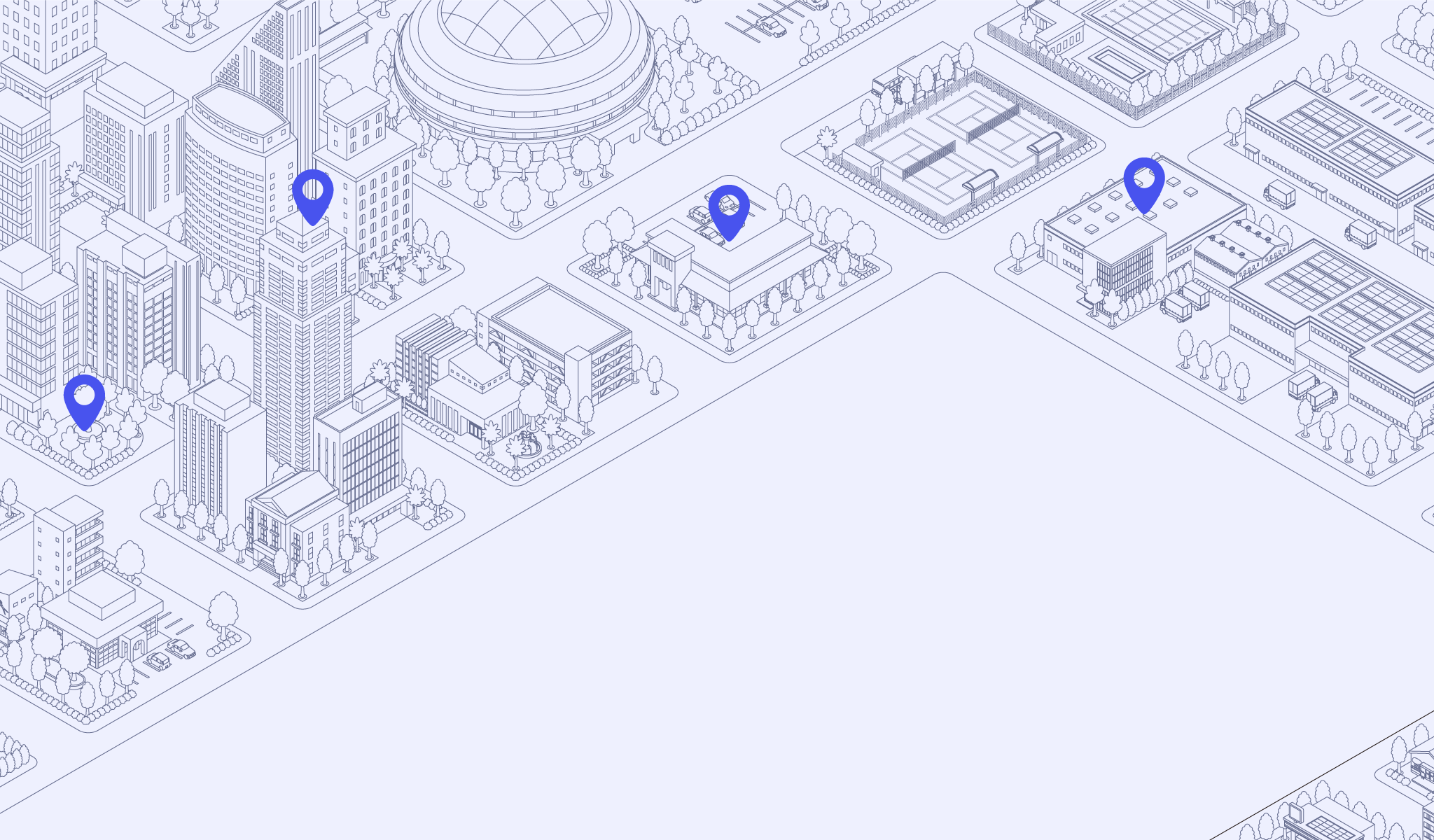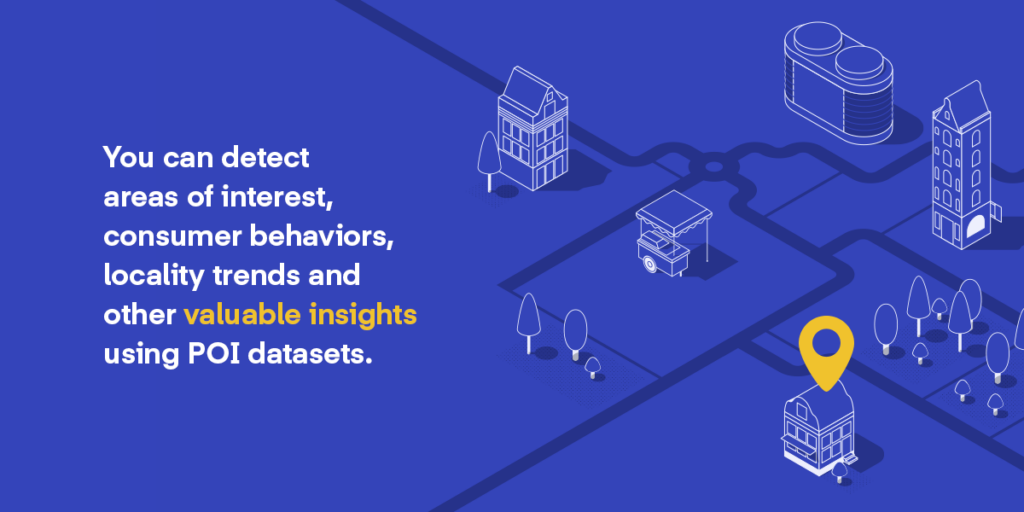
How to Leverage POI Data in Real Estate
Making real estate investment decisions involves gathering large amounts of property data, like:
- Location
- Size
- Amenities
- Prices and rates
- Potential risks
- Building and property conditions
- Local market trends
Real estate professionals must then analyze this data to uncover patterns and trends. Doing so helps them make more informed decisions regarding property appraisal, investment strategies, consumer behavior patterns and risk assessment.
By seeking ways to leverage point of interest (POI) data in real estate, you can make wiser investment decisions. Real estate companies can use POI data to select the best sites and plan projects based on market trends and potential.
What Is POI Data in Real Estate?
POI data describes information about a specific location of interest. It offers real-time insights into the business’s products, activities, services, average number of visitors, contact information and other key data points. POI data has applications across numerous industries, including real estate.
Real estate POI data helps you assess critical factors for property purchases and rentals. For instance, you might use POI data to research amenities near prospective properties, such as:
- Parks
- Schools
- Restaurants
- Health care facilities
- Shopping centers
- Public transportation
These features can make properties more appealing to homebuyers and renters. A property with higher value and desirability increases your return on investment (ROI). POI can determine the most profitable properties, allowing you to make the most informed investments. You can also make more accurate market predictions based on real estate prices and trends.
5 POI Data Use Cases in Real Estate
Essentially, POI data takes the guesswork out of decision-making for real estate professionals by providing data-driven insights. Below are the different ways you can use POI data to evaluate investment opportunities.
1. Investment Property Research
Every building, site and property has unique coordinates and surroundings. It’s essential to understand the “why” of a location in addition to the “where.”
POI data can help you predict profitability before investing in real estate. You can obtain technical records and information about building conditions. You can determine competing brands’ locations, helping you identify opportunities and risk areas.
You can better understand neighboring businesses and the types of consumers they attract. As such, POI can provide a competitive advantage when conducting investment research.
2. Site Selection
Various factors guide the real estate site selection process, such as competitors, cost-effectiveness and socioeconomic demographics.
When choosing a retail store site, for example, POI data can gauge the specific spots that will generate the highest revenue stream for businesses that lease these properties. When investing in office space, commercial real estate companies often home in on the property’s proximity to hotels, restaurants, stores, cafes and other necessities that office employees desire access to.

Whether building a school or opening a new store location, POI can enhance your knowledge of the property location to help you make smarter investment decisions. You can detect areas of interest, consumer behaviors, locality trends and other valuable insights using POI datasets.
You can gain a more holistic understanding of the property’s surrounding environment, from infrastructure to commercial activities and social amenities. In turn, you can determine if a property is right for your residential or commercial site. Additionally, real estate agents can provide prospective buyers with location options in different visual formats based on their needs and preferences.
3. Market and Competitor Analysis
In the real estate sector, understanding competitors, consumers and market demographics is critical for driving growth. POI can garner insights about supply and demand, location, sales prices, rental rates and ROI potential.
Every real estate professional should master and prioritize market research and analysis. They can assess whether a specific location will succeed and yield a high lease value.
4. Risk Mitigation
POI data can help you mitigate potential risks before investing a significant sum. Real estate professionals must evaluate various factors when assessing a property’s risks. Insurance companies should also have detailed information regarding homes’ and businesses’ risk factors.
POI data can help you research past events to forecast a property’s future risks. For instance, you can determine the crime rate near a property or its susceptibility to natural disasters, such as flooding, fires, hurricanes and earthquakes.
By understanding potential risks associated with the property in question, you can make safer decisions on where to invest your resources. You can also determine how to minimize these risks. For example, you might identify an area with a high flood risk and take steps to protect the property from water damage.
5. Marketing and Advertising Campaign Planning
POI data — such as location-based audiences and consumer behavior patterns — can help you create tailored marketing campaigns. For instance, you can use this data to identify areas with a demand for higher-end properties. You might then develop an advertising campaign to target a wealthier audience.
Alternatively, you might target an audience seeking more affordable housing options. POI and location-based data can help you adapt your marketing strategies to your target demographics’ needs.
How dataplor Can Streamline Your POI Data Collection Strategy
Real estate companies rely on insightful location intelligence and POI data to make smart investments and thrive in a competitive market. As a global POI data provider, dataplor is ready to help you make the most informed, data-driven decisions so you can invest with confidence. We support our proprietary POI and territory data with:
- Artificial intelligence (AI)
- Machine learning (ML)
- Large language models (LLMs)
- Advanced image recognition
- Global human validators
These elements cover various data points, including online feedback, consumer behaviors and geographically tagged information. Our advanced data location services can help you:
- Drive revenue. Our POI data can assess potential capital growth based on the prospective location’s surrounding competitors and areas of interest.
- Optimize site selection. Leveraging real-time location data can help you make more logical decisions about business openings and closures, maximizing the real estate site selection process.
- Gain a competitive edge. Stay ahead in a competitive market by discovering where your competitors globally sell their products or services in real-time.
- Reach your target audiences. Our location intelligence can help you create more tailored advertising campaigns, communicate with your intended audience and ultimately generate more revenue.
- Make more practical investment decisions. Our comprehensive location and brand data lets you access valuable insights into global competitor performance. That way, you can invest with the utmost peace of mind.
Set Your Real Estate Operations up for Success With dataplor
As a leader in global location intelligence, we can work with you to stockpile POI data that helps you make the most valuable investments and business decisions. Interested in amplifying your real estate workflow with dataplor? Learn more about our solutions by contacting us online or calling (424) 484-2591. We look forward to speaking with you!



